Talk about the Comeback Kid. After Comet C/2012 S1 ISON rounded the sun yesterday afternoon, professional astronomers around the world looked at the faded debris and concluded it was an “ex-comet.” NASA wrapped up an hours-long Google+ Hangout with that news. The European Space Agency declared it was dead on Twitter.
But the remnants — or whatever ISON is now — kept brightening and brightening and brightening in images from the NASA/European Space Agency Solar and Heliospheric Observatory. The pictures are still puzzling astronomers right now, almost a day after ISON’s closest encounter with the sun.
You can follow our liveblogged confusion yesterday, capped by a gobsmacking announcement from the Naval Research Laboratory’s Karl Battams, “We believe some small part of ISON’s nucleus has SURVIVED perihelion,” he said on Twitter. Since then, Battams wrote a detailed blog post, referring to images from the Large Angle and Spectrometric Coronagraph (LASCO) aboard SOHO:
“Matthew [Knight] and I are ripping our hair out right now as we know that so many people in the public, the media and in science teams want to know what’s happened. We’d love to know that too! Right now, here’s our working hypothesis: As comet ISON plunged towards to the Sun, it began to fall apart, losing not giant fragments but at least a lot of reasonably sized chunks. There’s evidence of very large dust in the form of that long thin tail we saw in the LASCO C2 images.
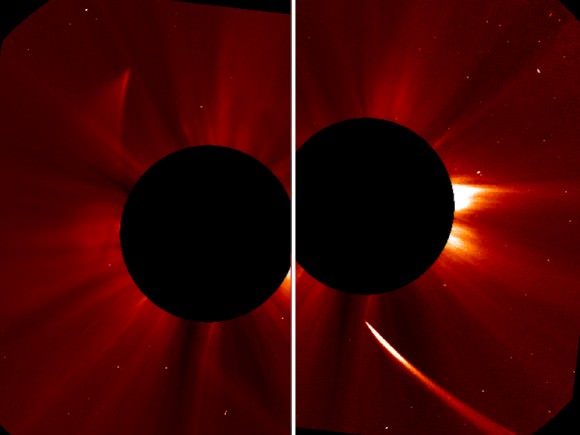
Then, as ISON plunged through the corona, it continued to fall apart and vaporize, and lost its coma and tail completely just like Lovejoy did in 2011. (We have our theories as to why it didn’t show up in the SDO images but that’s not our story to tell – the SDO team will do that.) Then, what emerged from the Sun was a small but perhaps somewhat coherent nucleus, that has resumed emitting dust and gas for at least the time being. In essence, the tail is growing back, as Lovejoy’s did.
So while our theory certainly has holes, right now it does appear that a least some small fraction of ISON has remained in one piece and is actively releasing material. We have no idea how big this nucleus is, if there is indeed one. If there is a nucleus, it is still too soon to tell how long it will survive. If it does survive for more than a few days, it is too soon to tell if the comet will be visible in the night sky. If it is visible in the night sky, it is too soon to say how bright it will be…
This morning (EST), Battams succinctly summarized the latest images he saw: “Based on a few more hours of data, comet #ISON appears to be… well, behaving like a comet!”, he wrote on Twitter.
NASA issued a status update this morning saying it’s unclear if this leftover is debris or an actual nucleus, but added that “late-night analysis from scientists with NASA’s Comet ISON Observing Campaign suggest that there is at least a small nucleus intact.” NASA, as well as Battams, pointed out that comet has behaved unpredictably throughout the 15 months scientists and amateurs have been observing it.
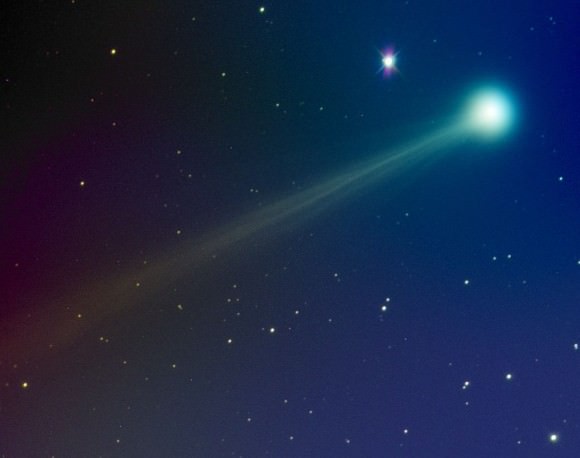
Throughout the year that researchers have watched Comet ISON – and especially during its final approach to the sun – the comet brightened and dimmed in unexpected ways. Such brightness changes usually occur in response to material boiling off the comet, and different material will do so at different temperatures thus providing clues as to what the comet is made of. Analyzing this pattern will help scientists understand the composition of ISON, which contains material assembled during the very formation of the solar system some 4.5 billion years ago.
Slate Bad Astronomy blogger Phil Plait jokingly threw out phrases like “What the what?” on Twitter yesterday, but added in a late-night update: “If you haven’t figured this out yet: We are *loving* this. The Universe surprises us yet again! How awesome!” He continued with his astonishment in a blog post:
For those keeping score at home, it got bright, then it faded, then it got all smeared out, then it came around the Sun smeared out, and then it seemed to get its act together again. At this point, I refuse to make any further conclusions about this comet; it seems eager to confuse. I’ve been hearing from comet specialists who are just as baffled… which is fantastic! If we knew what was going on, there’d be nothing more to learn.
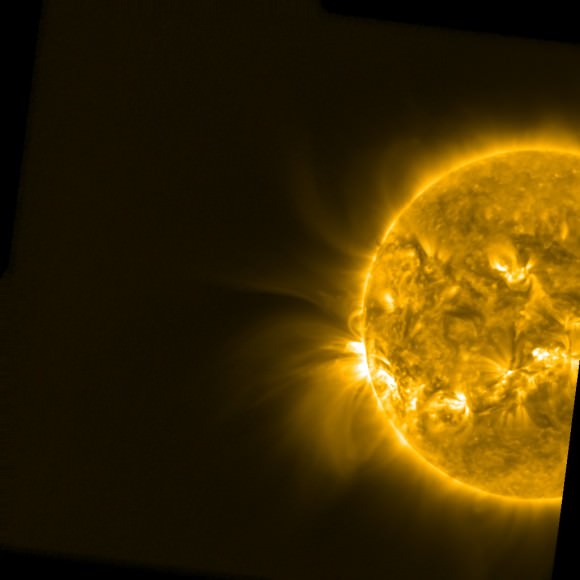
In a series of Twitter posts this morning, the European Space Agency’s science feed offered this take from Gerhard Schwehm, ESA’s head of planetary science:
From my initial look at ISON in today’s SOHO images, it seems nucleus has mostly disintegrated. Will only know if part of ISON nucleus has survived by continuing observations and performing more analysis. Bright fan-shape implies lots of material was released and travelling along ISON orbit, not confined in a traditional tail. Would be interesting to learn more about composition of debris to help us piece together what’s happened, but we need more time.
Other spacecraft searching for ISON were not able to spot it. For ESA’s PROBA-2, it may have been because of its composition or proximity to the sun, but scientists are unsure. It was also invisible in NASA’s Solar Dynamics Observatory; “scientists are still looking at the data to figure out why,” an agency Twitter update stated this morning.
So to sum up: no one’s quite sure of what is happening now, or what is happening next, but we will keep you posted and let you know if and when you can see ISON again in your home telescopes.
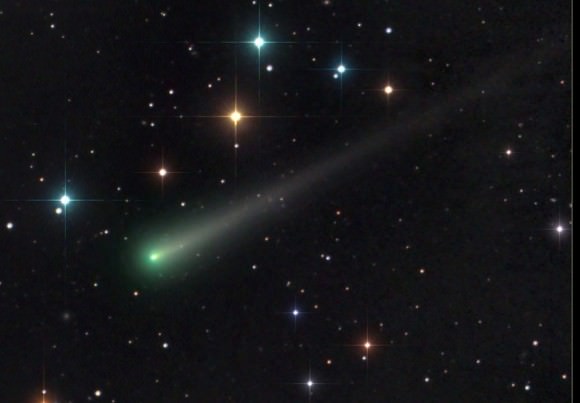

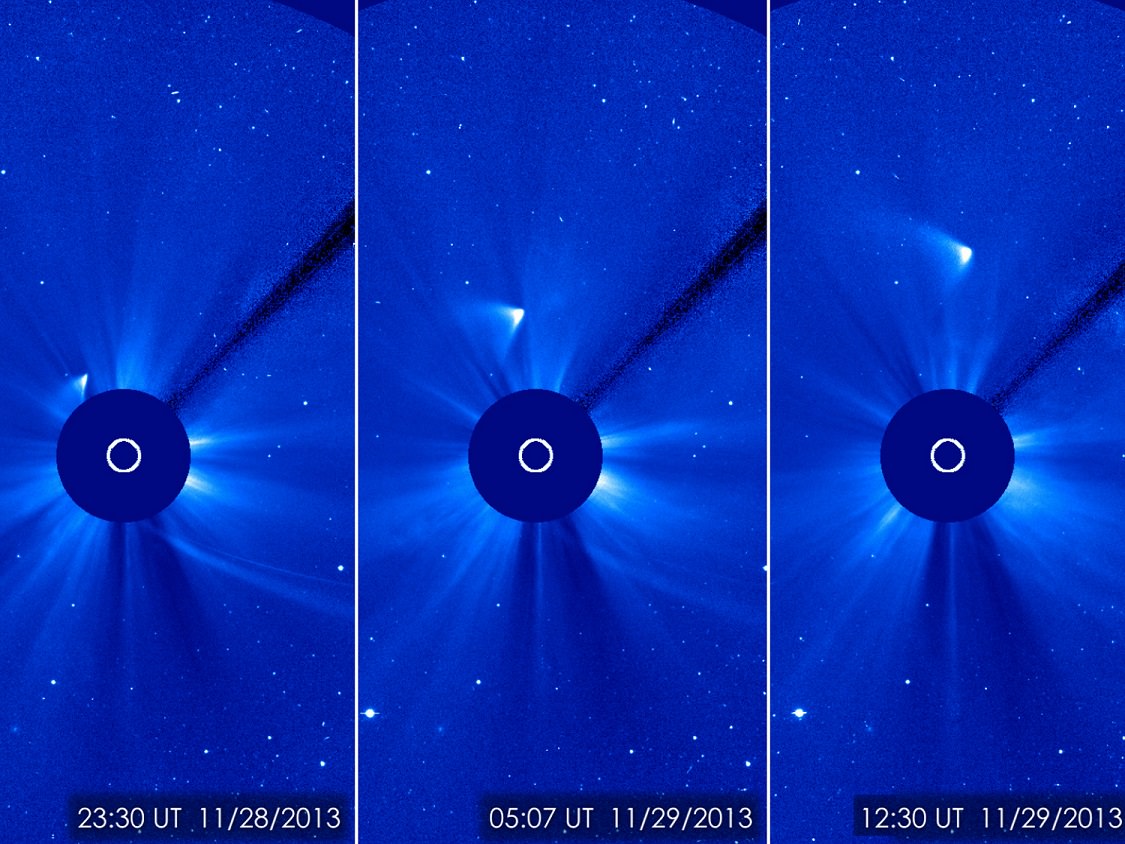
Cool, so it’s not quite over yet 🙂 Although if just a small piece survived, it won’t put on the great show we were hoping for.
Btw i made the mistake to google “zombie comet ison”… Don’t do it! Those were among the wackiest conspiracies i’ve seen…
Now I am interested and curious… Googling zombie comet ison 😛
Comet 1, sun 0. Plucky little comet.
Although I have never seen such an object in 35 years of comet imaging and observing, there may be hope for a small fan shaped comet to re emerge in the first weeks of December. After a week if its still a fan shaped pattern, we can almost certainly hope for a photographic comet of a very unusual type!
Chris
I think the scientists were very pessimistic at the Nasa Hangout yesterday because the data was pointing towards that, but after all, it was stated that this comet behavior had surprised them before. I hope it continues to baffle us.
Fan shape or other… I wish it had seen with naked eye for a couple nights…
What we have learned so far: Even though scientists need to be careful before making “big” estimates…!
Though i agree with you that making big estimates are a ba-a-a-d idea, i just want to point out that it seems that most scientist have been very sceptical about the huge estimates.
The problem was when media got hold of the story and procalimed that ‘scientists’ predicted it would become as bright as the full moon, without ever checking if it was a scientific consensus or just the one claim. Sensationalism is much to common when it comes to phenomenon like this.
One has to pay close attention to the terms used by real science, such as:
Could be, maybe, might, potentially, hopefully etc..
pseudo science and journalists say “Will be” and “Is”
This Universe owes me a comet. I’m due. Come on ISON, hang in there buddy.
ISON was on the verge of bankrupcy, but are now refinancing through emission of new dust, and projects to deliver a positive albeit small result for the next quarter.
I agree!!
NIce…. I’ll be out there every clear morning!
Recent images show Comet ISON continues to brighten..
http://science.nasa.gov/media/medialibrary/2013/11/29/weird_anim2.gif
I especially liked the comet’s reaction to the E/M – plasma shock waves as it approached Sol! What were the conditions below ISON on Sol? STEREO catch that angle?
Don’t worry comet lovers.
You will all get a real close up soon enough.
If anyone wants to follow me my twitter is @kayleighsomers1 please follow :p xD
wow i need a life im asking random people to follow me 0.o
I love speculative suggestions, but you guys are silently waiting 🙁
I’ll give some as to why the dust dispersed:
– Dust couldn’t keep up with ideal path of pointing away from the Sun.
– Mass Triangle ISON-Dust-Sun changed
– Sun’s Electrectro Magnetic Field got strong enough
– Both of the both
– Little green men occupy comet, just took ‘m a bit to restart their spaceship engine
– …. anything you guys make up.
Anyone see the CME as Ison left the Stereo view?
I see the expert astronomers are not such experts when it comes to comets. Kinda like meterologists and the weather. There are things happening here far beyond our comprehension.
Clap if you want ISON to live
Universe always has the last word. Just asked these flummoxed scientists.
Comet discharged and was turned from cathode to anode as it crossed the sun.
What a lot of crap.
Well that’s a convincing argument. You’ve got me there.
Oh come on please. It is the EU crap again.
Go a head, calculate the maximum charge that a comet can hold.
I am not interested in links or big explanations just calculate how much charge maximum that can be stored on an object the size of a comet.
2 formula’s:
1. Coulombs formula –> Charges wants to escape
2. Newtons gravitational formula. –> Charges gets attracted
Same charges will repel each other so the Coulomb force will try to eject the charges from the comet.
Newtons gravitational force will keep the charge on the comet.
The maximum stored charge is when the coulomb repelling force = the Newton attracting force. More charge means that charge gets accelerated beyond the comets escape velocity never to return
So go ahead impress us. Fill in the numbers.
He won’t, because he can’t.
So it had enough charge to bridge almost 2 million kilometers of vacuum?
How did it not disintegrate under internal stress from that charge?
How did nothing special happen when it flew past Mars?
How would you explain it going past neutral being that distance from the Sun?
Last but not least: Can I have some of that shit you’re smoking? It must be very potent…
It’s pretty good stuff. Take a hit, and wait before you take another. https://www.youtube.com/watch?v=0RXQJR5SSFk 😉
Please answer my questions directly. This video does not address any of that. I know what EU claims. You don’t think they are dirty snowballs? Fine, we don’t know that for sure… yet. In January the Rosetta spacecraft will arrive at a comet and a lander will be deployed a bit later. By this time next year we will know for sure what they are really made of if that mission is successful. So excuse me if I don’t want to have yet another speculative discussion about what comets are made of.
On the other hand, your claim is pretty quantifiable. You can put a number on the charge the comet must have to be able to discharge from that distance through a vacuum. I assumed you did the math on this before making your claim like a good scientist did? With that number you can calculate the force that was trying to push it apart, the very significant change in magnetometer data from spacecrafts when it flew past Mars. As a bonus you could try to explain how you would ever charge the comet past being electrically neutral with 2M km of the best possible insulator (a vacuum) between it and the source.
Before you claim solar particles… We have a boatload of satellites monitoring those. They are both positively and negatively charged. They can ONLY discharge but would have done that months ago already. ISON is pretty small and the solar radiation is pretty intense. I doubt there is any mechanism that would allow it to have any charge left when it passed Mars’ orbit.
Please address ALL my points. If you don’t have precise numbers for all of them, so be it. But at least address everything and we may have an argument. If you move the goalpost I will not waste my time on this. Give me mechanisms and numbers + the sources where possible. Youtube videos do not count as a source. Usually I’d say peer-reviewed only, but anything with some math supporting your claim will do for now…
Let’s recap:
You make a wild, unsupported claim.
You make a snotty remark.
You post a link to a video.
You go silent as soon as you are asked to adress all the questionmarks you leave unanswered.
The depth of your scientific expertise is amasing!
Hi I was waking back from my local shop today around 4pm GMT I live in the UK. I noticed a stretched orange light in the sky I have been trying to view ison all month. I ran home and git my binoculars out, whatever it was it was beautiful could anyone please help and let me know if it was possibly the remainder of ison? Thanks
How close did ISON come to the sun at perihelion and how fast was it moving?
~1.2 million kilometers, which is less than the diameter of the Sun itself
Please settle debate with my brother. I say ISON is over 20M mi from Earth, he says we may pass through the tail and be in debris field.
Also, aliens would not fly so close to the Sun even for fuel economy to take advantage of the sling shot ride…but I wonder if they tried to pop the clutch???
After the comments made by the NASA spokesperson yesterday, why are we to listen to anything said now?
Has anyone wondered, like me, that what is left is not a comet, but what was “mostly” camouflaged by it on the way in?
The planets and the research we have done something truly unexpected.
I remember Comet Halley,I was young enough that with a little luck,I may get to see it again.I watched Comet Hale-Bopp and wondered at mankinds superstitions as the ‘alien ship’ following the Comet gained a crew from Earth via cyanide kool aid, who knew?It stayed visible for months.There have been lesser comets and a few fireballs since, but none like Comet ISON.Now I am educated enuf to fully appreciate what these visitors are, Now I hope that ISON has cracked open it’s nucleus enough for scientists to view the conditions in the infancy of our solar system, but have enuf substance left for the rest of us to view it.I will be waiting with my refractor in my snow covered environment in N.B Canada!!!GOOD LUCK ISON!!!!
ISON’s orbit does not share any direct commonalities with Earth’s orbit.
however:
“For several days around January 12, 2014, Earth will pass through a stream of fine-grained debris from Comet ISON,” says Wiegert. “The resulting shower could have some interesting properties.
http://science.nasa.gov/science-news/science-at-nasa/2013/19apr_isonids/
THANK YOU! That is very interesting.